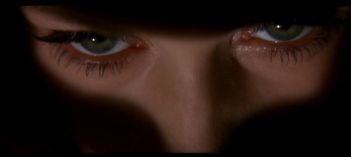Authorship has always been of interest to me, as I have grown up thinking that films were in the most part, to satisfy a director’s artistic vision. Only a couple of weeks ago have I learnt that until recently, Hollywood was made up of a collaborative system.
Meanwhile, innovative French filmmakers were the first to take Hollywood’s idea of collaboration out of the equation and individualise the experience of filmmaking. When Hollywood and the rest of the world recognised this contemporary style of filmmaking, almost automatically a tension started to develop between the creative geniuses’ working within (and sometimes against) the confines of the collaborative system.
Since then, authorship has taken off like an unregistered dog.
Many progressive marketing strategies have come from this, like the film can now have one clear vision and it is easier for the audience to identify what film they might like to watch – like a cloak of confidence to viewing any works.
This blog will focus on David Lynch, and his film Lost Highway (1997).
Lynch is well known for his artistic signatures that he lavishly applies to many of his films. His films are notoriously intense and mind-bending that it would be more appropriate to label him an enigmatic artist over a film director. Afterall, before he pursued film he was studying fine art. Through the various elements of film form, Lynch skillfully blurs the line between the conscious and the unconscious, propelling the viewer into a corrupted perception of time, reality and illusion. This puzzle he conjures up for the audience is then mulled over and over generating conversations and debates. On viewing this film, I have noted many cinematic techniques that Lynch has employed to brand it as his own expressive work. Some of these trademarks include:
// The Use of Extreme Close-Ups


Lynch uses extreme close ups to inspire focus or intimacy between the viewer and what they are being shown. This is highly appropriate behaviour as one needs to be highly focused to watch or absorb one of Lynch’s films as they are highly complex and confounding.
// The bright use of colour


Lynch plays with colour in his films. Some argue that this could be disadvantageous to the viewer as it might block them from being totally lost and emmersed in his films, when it comes to films like these though I strain to this as bad. Lynch’s films are so completely absorbing that sometimes, that snap back to reality, is a nice feeling. The use of bright colours also helps the audience (for this film specifically) identify and separate the character’s delusion from their reality.
// The use of ambient music over background music
The lack of background music is my favourite personal style he uses. To me, it’s all about contrast. This scene (when Fred meets the mystery man) starts with light ‘party’ music. The music dies down to allow for a creepy ambient noise similar to that of air flowing through an empty corridor. When used, it is extremely eery and makes the audience feel uncomfortable, which is great manipulation of the film form element as a precursor to the fact that something is not right.
Lynch masterfully manipulates film form to create his own esoteric signature style that we, as an audience, can easily identify in his other films.
// “The great directors of cinema may be compared, in our view, not merely with painters, architects and musicians, but also with thinkers. They think with movement-images and time-images instead of concepts.” Giles Deluze, 1983. //
Reference: Giles Deluze, Cinema 1: The Image Movement [1983], trans. Hugh Tomlinson and Barbara Habberjam (Minneapolic: University of Minnesota Press, 1996), xiv.


